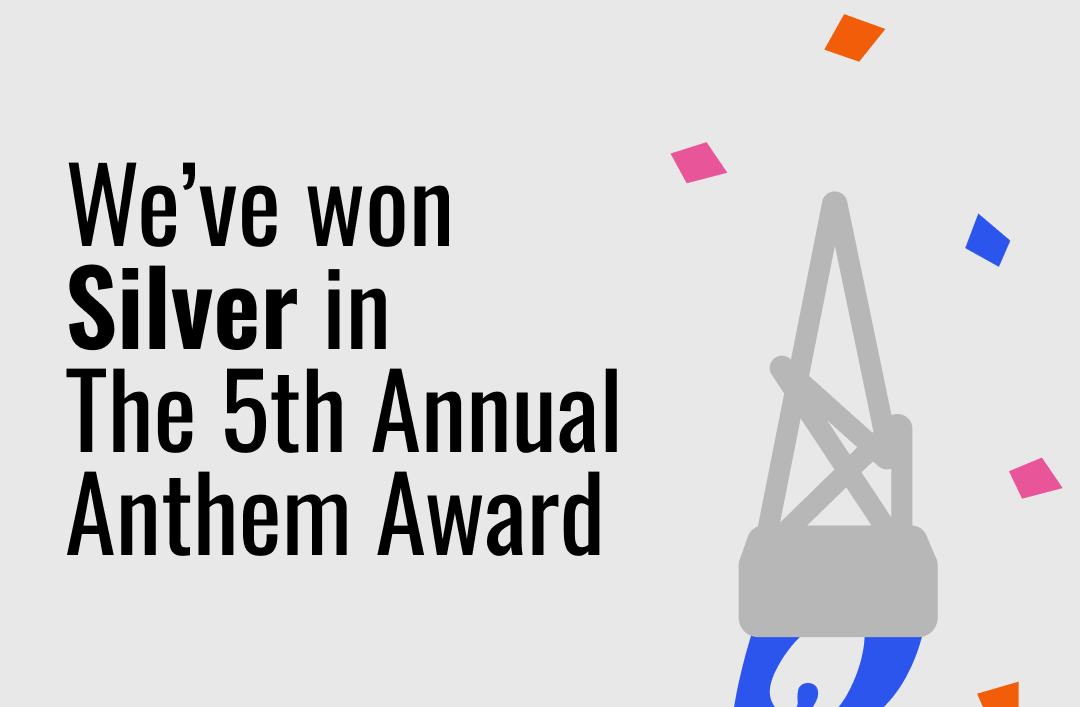Burnout.
You’ve heard of it. You’ve felt it—that total mental exhaustion that means you’ve pushed past the limits of what a person can reasonably be expected to do at work. Whether it comes from too much work—or, paradoxically, from a chronic lack of purposeful work—burnout is a painful condition that leaves millions of employees from all kinds of work environments feeling depressed, anxious, and cynical all at once.
As a society, we tend to label burnout as a problem for the individual. Advice for dealing with burnout often focuses on behaviors that the sufferer ought to change in order to get back to a more productive state of mind as soon as possible. People with burnout are encouraged to meditate, add some light exercise to their daily routine, and above all to “set boundaries” around their work—to communicate clearly with bosses and colleagues about how many tasks they’ll take on, and when they will perform them.
While this advice may be well-intentioned when it’s delivered from one coworker to another, it ignores the deeper problems at work in the worldwide phenomenon of burnout. Specifically, giving individual employees tips and tricks for dealing with “their” burnout places the responsibility for recovery squarely on the individual’s shoulders, while failing to account for the conditions that caused the burnout in the first place—which, in many cases, are outside of the employee’s control.
What’s worse, while common techniques for managing burnout are often presented as therapeutic interventions designed to help the sufferer feel better, many may spring from an unspoken motive that has less to do with employee health...and more to do with company profit.
Defining "Burnout"
The term burnout has been applied to so many different scenarios that it can be tough to get a fix on exactly what it means. According to the World Health Organization, which classifies it as “a syndrome [...] resulting from chronic workplace stress that has not been successfully managed[,]” burnout has three dimensions:
- feelings of energy depletion or exhaustion;
- increased mental distance from one’s job, or feelings of negativism or cynicism related to one's job; and
- reduced professional efficacy.
In other words, to be “burned out” is to feel chronically drained, unengaged, and ineffective at work.
To this definition, Psychology Today adds: “burnout most often occur[s] when a person is not in control of how a job is carried out, at work or at home, or is asked to complete tasks that conflict with their sense of self [...] To counter burnout, having a sense of purpose, having an impact on others, or feeling as if one is making the world a better place are all valuable.”
That is, when performing a task runs counter to an employee’s values—or when the task lacks meaning entirely—then it is more likely to contribute to a case of burnout than a task which an employee finds personally fulfilling.
Again, as a culture, our first instinct has been to place the responsibility for “successful manage[ment]” of burnout on the individual going through it. Accordingly, burnout sufferers and their supervisors can find a whole range of books, courses, seminars, workshops, and other resources designed to teach employees how to take control of their symptoms so they can get back to work.
And while some of these tools may indeed help some people with burnout feel better—at least until the next time a sufferer crashes and burns—many are unfortunately grounded in the assumption that the main point of treatment is to restore a worker’s productivity, rather than heal a human being dealing with a complex, painful issue.
The "Square of Happiness"
In her analysis of the 2009 documentary Burning Within, which focuses on the use of burnout therapies in the wake of the 2008 financial crisis, University College of London scholar Annie Ring takes a hard look at the language we use to talk about burnout, which reveals a lot about how we think of ourselves in relation to our work. According to Ring, burnout sufferers or their employers seek out therapies because:
“The burnout patient cannot produce any longer, and so she must be brought back to a cooler, more productive state. Subjectivity figures in this context as suffering an irregularity of temperature, and so a process of cooling down must begin.”
In other words, the language of burnout tends to imply that remaining productive is a process similar to temperature regulation—a kind of optimization, or ongoing adjustment to outside conditions. What’s more, in the modern office setting, the responsibility for this optimization—for turning the worker’s mental dials up and down to get their “temperature” just right for productive labor—is assumed to be solely in the worker’s hands.
To a certain extent, this is all well and good. People do, in fact, need to have a sense of agency and control over their own lives in order to feel their best. Under certain circumstances, encouraging behaviors that develop that feeling in a work environment can be beneficial for the individual.
But these techniques are not magic formulas in and of themselves. And they become suspect when employers and governments use them as an excuse to avoid any responsibility for the conditions that cause burnout in the first place—such as a global economic catastrophe—instead putting that labor squarely on employees’ shoulders, while doing little or nothing to improve stressful or tedious work environments.
Burning Within is full of scenes depicting this misapplication of pseudo-therapeutic techniques designed not to heal, but to encourage a return to productivity. One of the most cringeworthy is a segment from a television show hosted by business coach Ingo Vogels, who offers tips to a burned-out guest. As Ring describes it:
“Vogels’s advice is to cultivate happiness by stepping into what he terms a ‘Glücksquadrat’ / ‘square of happiness’: a space of positive emotion into which the guest can imaginatively step, improve his posture, and so, apparently, recover from the negative experience of burnout [...] The tenor of his concern for his television guest, with its emphasis on a return to working productivity via the cultivation of pleasant emotions, bypasses a deeper therapeutic or indeed economic exploration of the burnout.”
This “square of happiness” technique, like the thoroughly debunked “power pose,” calls on the individual to hack their own emotions to create feelings of positivity on demand, rather than investigate the underlying reasons for their exhaustion, anxiety, and lack of purpose. According to Ring, the real point of the “Glücksquadrat” and similar exercises is not to heal the sufferer at a deep level—which would take up valuable time and resources—but to get an employee back to a a good enough working condition so they can return to their post and resume production as soon as possible.
The real health of the employee, in this framework, is less important than their ability to reliably generate profitable outputs. Their personal well-being, in fact, barely matters at all.
Fighting Back with Meaning
Now, none of this is to suggest that the average supervisor is a mustache-twirling robber baron whose only goal is to squeeze employees for all the productive labor they’re worth. On the contrary, if Ring’s analysis demonstrates anything, it’s that the problem of burnout is bigger than any one individual.
Employers may indeed mean well by bringing in motivational speakers, subsidizing mindfulness app subscriptions, and so on—but as long as the tools at their disposal are oriented towards improving productivity rather than promoting health, they’ll never get at the root of the problem.
Ultimately, burnout is a societal problem that demands a societal solution. Fixing it will require all of us—but especially those in positions of power—to rethink our relationship with work, and to stop seeing burnout as a “badge of success,” as historian Jill Lepore puts in a recent article for The New Yorker.
In the meantime, what is an exhausted employee supposed to do when she realizes that her company’s burnout-response program isn’t actually helping her get better? How can workers meet their need for real healing, as opposed to productivity-boosting quick fixes?
In other words, how do you fight burnout for the right reasons—to help yourself get better?
First, it can be useful to remember that, just as burnout is not something to be proud of, it is also nothing to be ashamed of. To double down on the temperature metaphors: we wouldn’t blame ourselves for getting overheated on a hot summer day. Yet we beat ourselves up mercilessly if we aren’t always perfectly productive under any working conditions.
This is silly, considering the fact that modern workplaces are chock full of alienation and Kafkaesque absurdities. Under the circumstances, you’d be crazy if you didn’t feel a bit overwhelmed. So begin by cutting yourself some slack, and realizing that you’re not alone.
Then, see whether you can make or find any meaning in your current situation. As both the WHO and Psychology Today make clear, developing a sense of meaning and purpose in relation to one’s work is an important part of recovery from burnout.
Indeed, meaning is more than a luxury to enjoy or a tool to improve productivity—it is an essential part of human flourishing. As Viktor E. Frankl, author of Man’s Search for Meaning, puts it:
“We venture to say that nothing is more likely to help a person overcome or endure objective difficulties or subjective troubles than the consciousness of having a task in life.”
Of course, finding meaning in your work is easier said than done. Even people in jobs typically considered very meaningful in themselves can wind up losing their sense of purpose, as evidenced by high rates of burnout among teachers, social workers, and even clergy.
To benefit from the power of purpose, you might have to mine other areas of your life for meaning, and find ways to link them back to your work.
At a minimum, for instance, your job might support you on your own Hero’s Journey through life, providing stability and income that allow you to spend time on the things that really matter to you: caring for your family, pursuing a hobby, improving the community, etc. While your time on the clock might not offer the sense of fulfillment you hoped for, if you can connect the dots between what you do at work and what you truly find meaningful, you might be able to bring your boredom down to manageable levels, even if you can’t get rid of it entirely.
That said, if you still can’t find a sense of purpose in your work after giving it your best efforts, it might be time to move on. Again, a complete lack of meaning in your day is more than just a nuisance—it’s a health risk. While no job can guarantee meaningful work all the time, a job that consistently leaves you feeling hollowed out and cynical might be one to leave behind.
Do It for You
Above all, remember that the value of your health is not contingent on how much you can produce. Your well-being matters, full stop.
So if you’re feeling burned out, feel free to accept any help that is offered to you—but never forget that the goal is not just to get back to work, but to go through the healing you need to feel your best.




